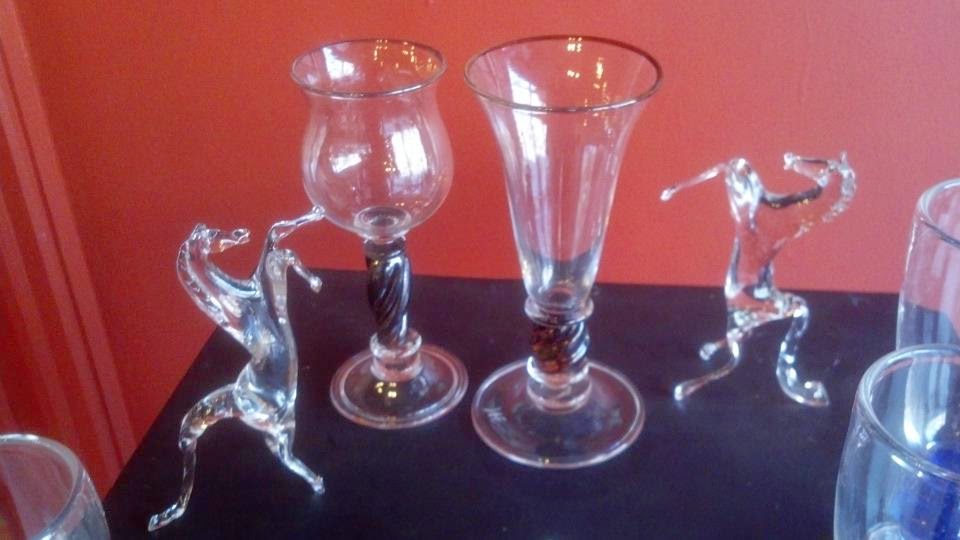Before white
settlers arrived Columbia, Pennsylvania, the home of Through the Fire Studios,
was a beautiful wooded area on the shore of the Susquehanna River populated by the Susquehannocks—an indigenous group which John
Wright subsequently tried to evangelize. Now it is known not only as a tourist
attraction due to the beautifully preserved buildings on its narrow streets; it
also houses the Center for the Creative Arts, home of the Through the Fire
glass works. Jaquematepress chatted recently with one of the owners, Ben
Ahlgrim.
“We blow
contemporary glass and anything you can think of in glass,” said Ben after a
class on glass blowing.
You are quite young. At what age did you
get started in this activity?
About ten years
ago, after attending Harrisburg Area Community College.
What led you to get involved in glass
blowing?
Well, I never
even thought about working with glass but I took a class on glass blowing, liked it and told
myself to give it a try.
Did you bring to your work any training in
art?
Yes, I had done
drawing and things like that. But actually my background was a bit rudimentary
before I got involved with glass blowing. However, we consider ourselves to be
artists; whereas a lot of people who work in glass think of it as a craft. We
prefer to think of what we do as artistic.
What happens during the process of
creation? Do you work on the basis of a previous idea or do you improvise?
Well for me it
has gone through changes. When we first started we didn’t have much knowledge
of the techniques we now use. We have a general idea but then as you start your
piece something develops. So in the process your original idea goes through
modifications. When you first start out with the raw material you can’t predict
what it is going to do. So everything is going to change. You might have a
preconceived idea of what you want but it isn’t going to turn out that way—at
least when you first start out. But over the past five years or so I have been
thinking out an idea previously and then carrying it out. The difference is
that now I think of something and know how to get there.
Yes. I believe
that every artist should have a sketch book. That way you can go back to your
notes if you are going through some kind of writer’s block.
You work with very brilliant colors. Is
that a recent development?
I haven’t always
worked with colors. Some glass workers consider working with colors as
taking
away from the natural beauty of glass and perhaps that is true: if you
have a
beautiful form you don’t need colors. When I started out I worked mostly
with
clear glass. And then in the process you learn a lot of techniques. You
can work it after it is done, carve it, sand blast it…things like
that.
Is Through the Fire Studies a cooperative,
a company…what is it?
Well, the Center
was established by Jeremy, myself and Milt Friedly. But there are about seven
other artists who also work here. There’s also a band that comes here to
practice. Everything that has to do with creative arts: dance, art, music…if
you like the space you can do it here.
What about your own activity?
We base our
activity on education but we are also artists so we sell our glass works and
teach…
Does what you ear get you to the end of the
month?
The months are
sometimes pretty long, yea, but we make it. As long as we can keep the furnaces
going and the doors open we will keep going.
What kind of feedback do you receive from
your buyers, students and visitors?
Yea, well I
think people are fascinated with glass, especially when they can actually see
it being made in front of them or even make their own piece. Everyone who comes
in the door gets very excited with what we do.
Do you have any other projects up your sleeve?
Oh yes we do. I
have been updating myself on Venetian style and technical aspects of the trade,
that’s probably what I’ll be working on throughout the summer. The unique thing
about glass blowing is that you are always learning something. If someone says
they say they know everything about something, don’t believe them because that
is impossible. And there is always someone you can learn from.
Contact:
Ben Ahlgrim
452 Locust Street
Columbia, Pennsylvania 17512



